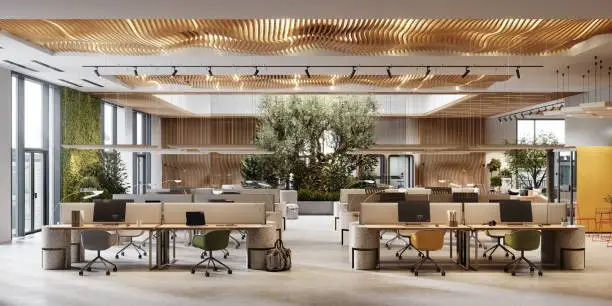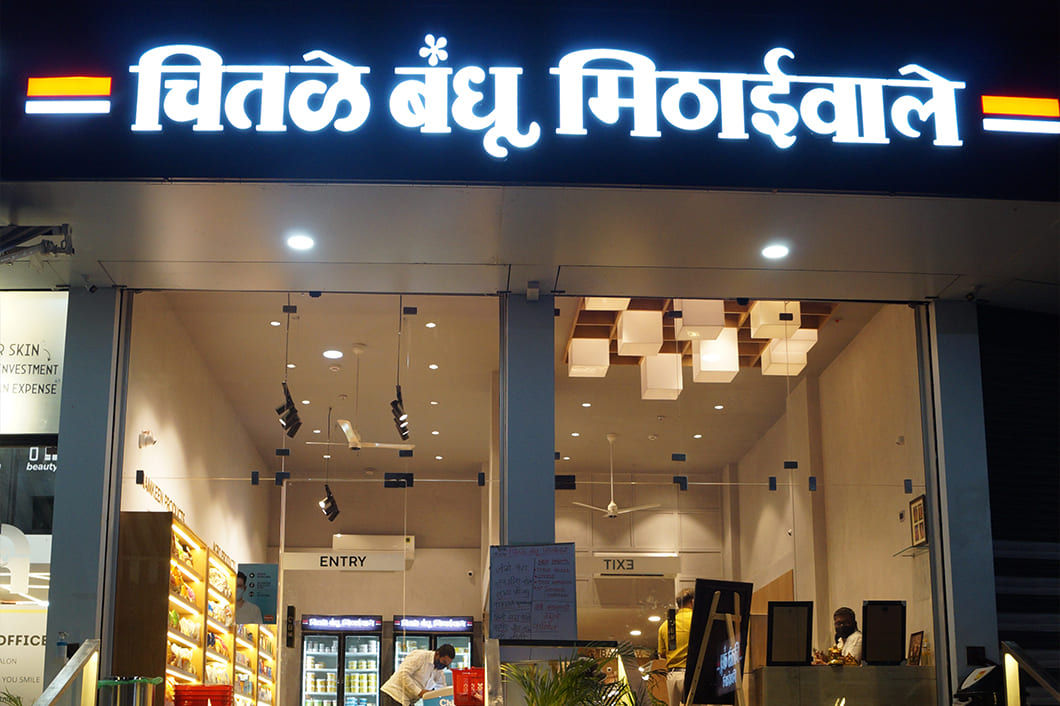Understanding Immersive Brand Experiences
Customers seek feelings that are familiar to them and in this case, they need to be connected. The use of brand installations gives people ambiance and an emotional attachment to a brand. This deep connection can be achieved when the interior design indicates the brands and mission statements when developed properly.
Pretend that you are entering a café for coffee and pastries and you get the feel of fresh pastries and soft music playing in the background.
The Role of Commercial Interior Design
Commercial interior design can also be defined as the link that connects the company and its consumers. It designs aesthetic environments that are functional in helping the brand define what it represents as well as setting a tone that is associated with the brand.
For instance, an innovative co-working center may use creative openness and bright colors to advocate the work.
Brand Identity Integration
It also requires that every single object of commercial interior design should depict a brand somehow. This applies to the colors, materials chosen, furniture used, and even the texture of surfaces in a house.
Take for instance a fitness studio that employs the use of bright and even invigorating colors to portray enthusiastic and motivated feelings. It would help members to feel inspired and at the same time, enhance the branding level of experience so that they are linked strongly to the brand.
Storytelling Through Design
It is also believed that architectural spaces can communicate a story if only they can effectively organize the interior designs. From artistic or graphic style, spatial positioning, or even mere selection and use of colors, it is possible to send messages about the journey, values, or objectives of the brand.
Try to see how museums or galleries arrange space. Often, they tell stories trying to pass the messages through nicely arranged displays.
Sensory Engagement
No doubt taking advantage of the sense organs can make a difference in the perceptions of a customer. Consider how factors such as scent, noise, and sight influence the creation of the mood. For instance-
- Scent: People can also remember the scent. For instance, a bakery might ensure that the smell inside anticipates the likes of freshly baked bread.
- Sound: Music in the background can either give a brand a boost or help it calm down depending on the mood that is set.
- Touch: The enhancement of furnishings through textures can add a certain quality to an experience while making it more enjoyable.
Must Read: How To Do Office Interior Design and Planning
Functional and Flexible Spaces
However, beauty and elegance cannot be forgotten entirely as they are a part of practicality too. This means that a good space is not only aesthetically spectacular but also functional.
Suppose a retail shop contains displays that are movable or have lighting that can be changed periodically. These can all contribute to making the environment warm and welcoming.
Consistency Across All Touchpoints
To make the experience as authentic as possible, the environment must stay consistent across different spaces. The brand personality should be evident throughout every connection a customer can have with the brand – on the Internet, in a physical store, and even in products.
Practical Tips for Creating Immersive Brand Experiences
Understand Your Brand and Audience
Be knowledgeable of the self and also the other people that are in the interface. To get an understanding of the needs and wants of the customers, it is important to conduct surveys of the customers or directly talk to the customers. These are elements that lead to the provision of tailored experiences and understanding them starts with the following.
Collaborate with Design Professionals
Choose talented designers for the project who clearly understand who your target audience is and what your brand is all about. Their skills can assist in creating the idea on the paper and at the same time, the outcome would be highly enjoyable.
Incorporate Technology
Technology-enriched solutions can contribute to improving the customer experience. Engagement can be further supported through the use of tools such as touch screens, digital menus, mobile applications for either ordering or VIP cards, and digital billboards.
Focus on Customer Comfort
There is no better feeling for a room than when it is warm and inviting and you want to just move and take a rest on it. Spend on comfort with some decent chairs, beautiful and efficient lighting, and good locations to make the customers linger around.
Measure and Adapt
Proactively seeking feedback or performing periodic audits of space performance helps ensure expectations are being met. Customers are another good source; always feedback to them through surveys or social networks to get such information.
Measuring the Impact
Customer Satisfaction
It is always a great achievement to ensure total satisfaction to customers as they will always come back. Measuring satisfaction by questionnaire results or feedback influences the direction of change.
Brand Recall
Lastly, it is argued that each customer who has built a positive association with the brand is likely to recommend it. Monitor the overall recall value of the brand through statistics like posts on social media platforms of customers or recommendations by others.
Sales Performance
The rise of other revenues signals that design enhancements contributed to results, observers say. By comparing the sales figures before and after the introduction of the designs, people can see how good design can lead to more revenues.
Social Media Engagement
Today, social networks are the primary tools for implementing the concept of modern branding. Sharing button-encouraging designs that can make customers share their experiences that they want to share with the world can serve to increase visibility.
Conclusion
It could be concluded that by keeping emphasis on your audience, engaging with designers, and prioritizing your customers, you will create a strong brand impression and exert a necessary and unique position in today’s saturated market conditions.
Don’t just design a space; craft an experience that resonates and lasts. Your brand deserves it!
Must Read: Furniture Trends in Home Offices: Blending Style with Functionality




